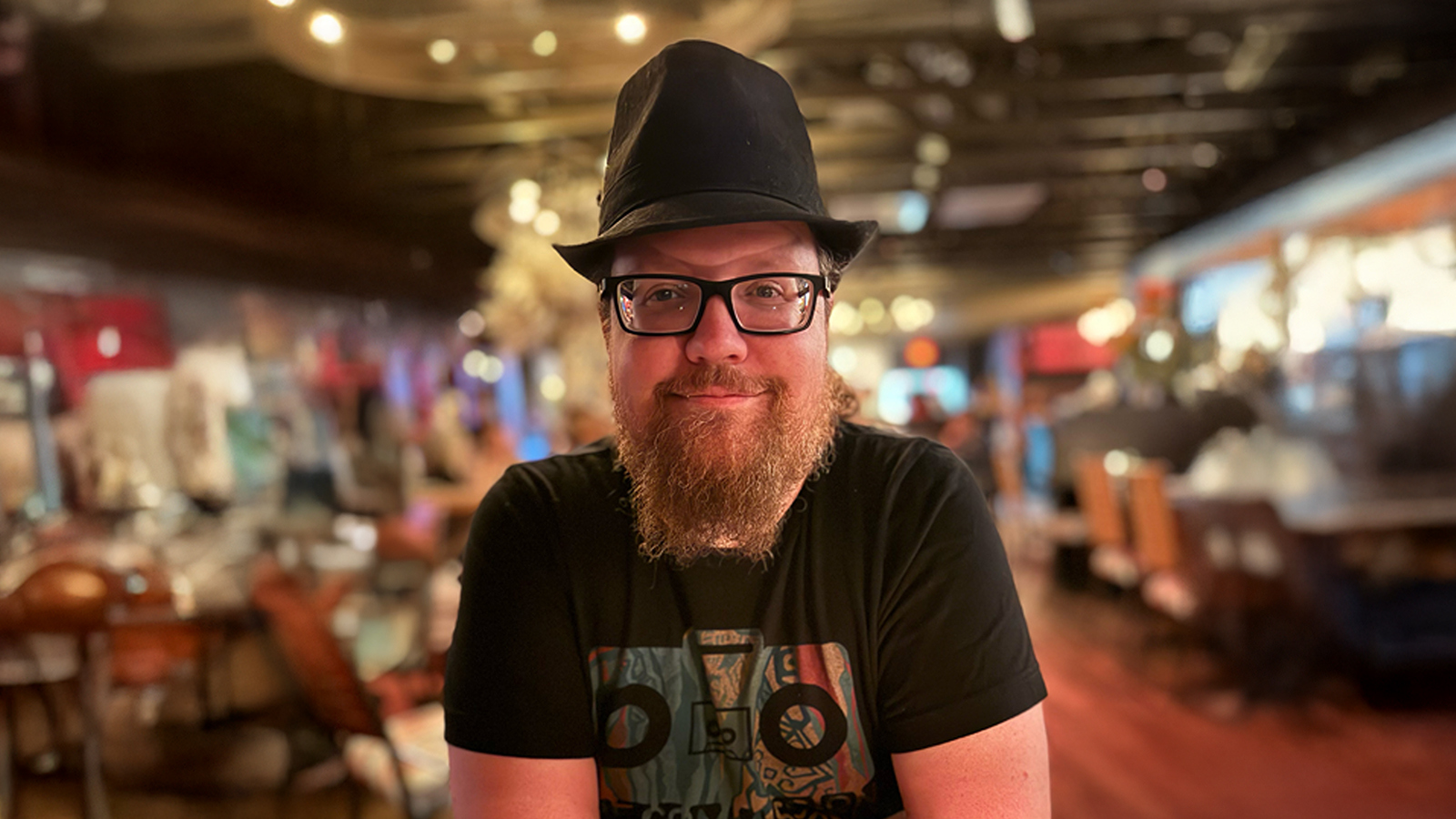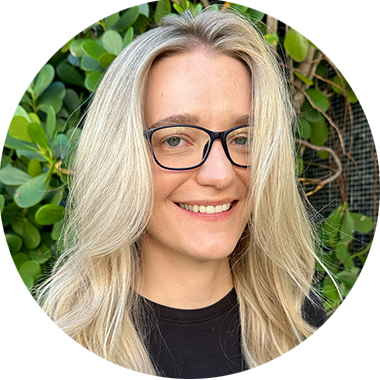Full Sail Stories
Published Aug 06, 2025
Faculty Spotlight: David Dennison (Digital Arts & Design)
David brings years of experience creating digital media for music events to the classroom.

As a Lab Instructor in Full Sail’s Digital Arts & Design program, David Dennison helps students with the designs, animations, audio, and editing skills that they use in their projects and demo reels. He also brings unique professional experiences to the lab: David has created projection mapping, holograms, motion graphics, and more for nightclubs, music festivals, raves, and other events. When he’s working with students, he emphasizes the importance of creativity, communication, and finding fresh ways to apply digital design skills.
What were you doing professionally before you started teaching at Full Sail?
I made designs for raves, nightclubs, and music events. Digital media was a new thing [when I was starting out], and I used photography, scanned textures, Photoshop, and 3D software to create some exciting and innovative designs. It was nice to get to be experimental with my styles and mesh with the vibe of the music and culture of the rave scene.
What are some of the most memorable projects you’ve worked on?
I made projection mapping content for a music festival called Tipper and Friends. I also made special content for the projection mapping sculpture that was mixed by visual artist Jonathan Singer during a performance by Mindex. In addition, I’ve worked with the Jabbawockeez dance crew and created bespoke content, holograms, and stage visuals for them. I also created video interludes for one of Janet Jackson’s shows as well as a video intro for TLC’s tour a few years ago.
What is one of the most important skills that you teach your students?
Communication is such a key thing, especially in a post-pandemic world where some students have become shy and sometimes don’t respond. Getting students to communicate in a few different ways is a huge help toward helping them understand projects, feel comfortable asking questions, confirming details, and setting expectations with others here at Full Sail.
What’s a unique strategy that you use when you’re teaching?
I identify how the student is doing outside of the classroom first, especially if they’re having a really hard time. I like to make sure they are in a good state of mind and see if there is any way I can help them, or I’ll just listen a little if they need to vent.
What are some of the key traits that students need to be successful in the design industry?
They need to stay fresh and always be experimenting with new design styles and tools. Doing little passion projects on the side can help them stay interested and engaged, too.
What’s the most important thing you want students to take away from their time with you?
That we have so many ways to use the skills taught at Full Sail. In the world of motion graphics and 3D animation, we can do things for TV, film, and social media, but we can also do things out in the real world like projection mapping, holograms, art installations, immersive experiences, and so much more.



